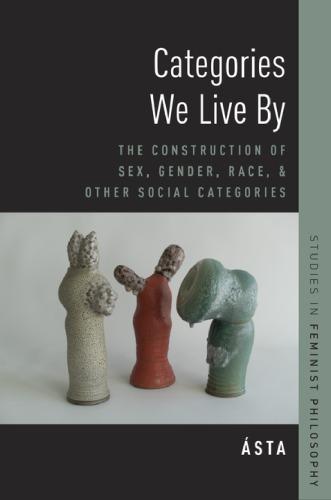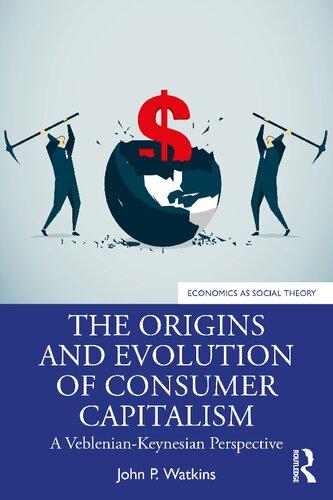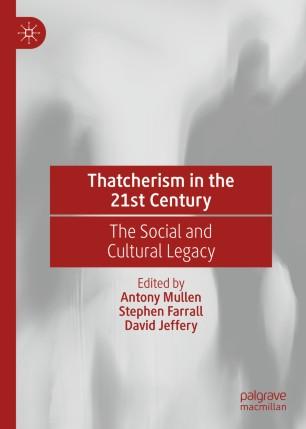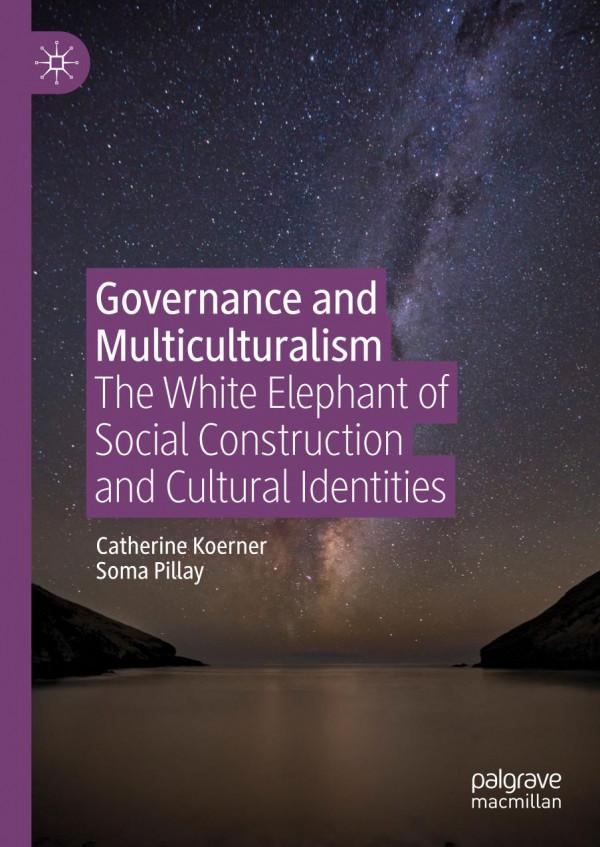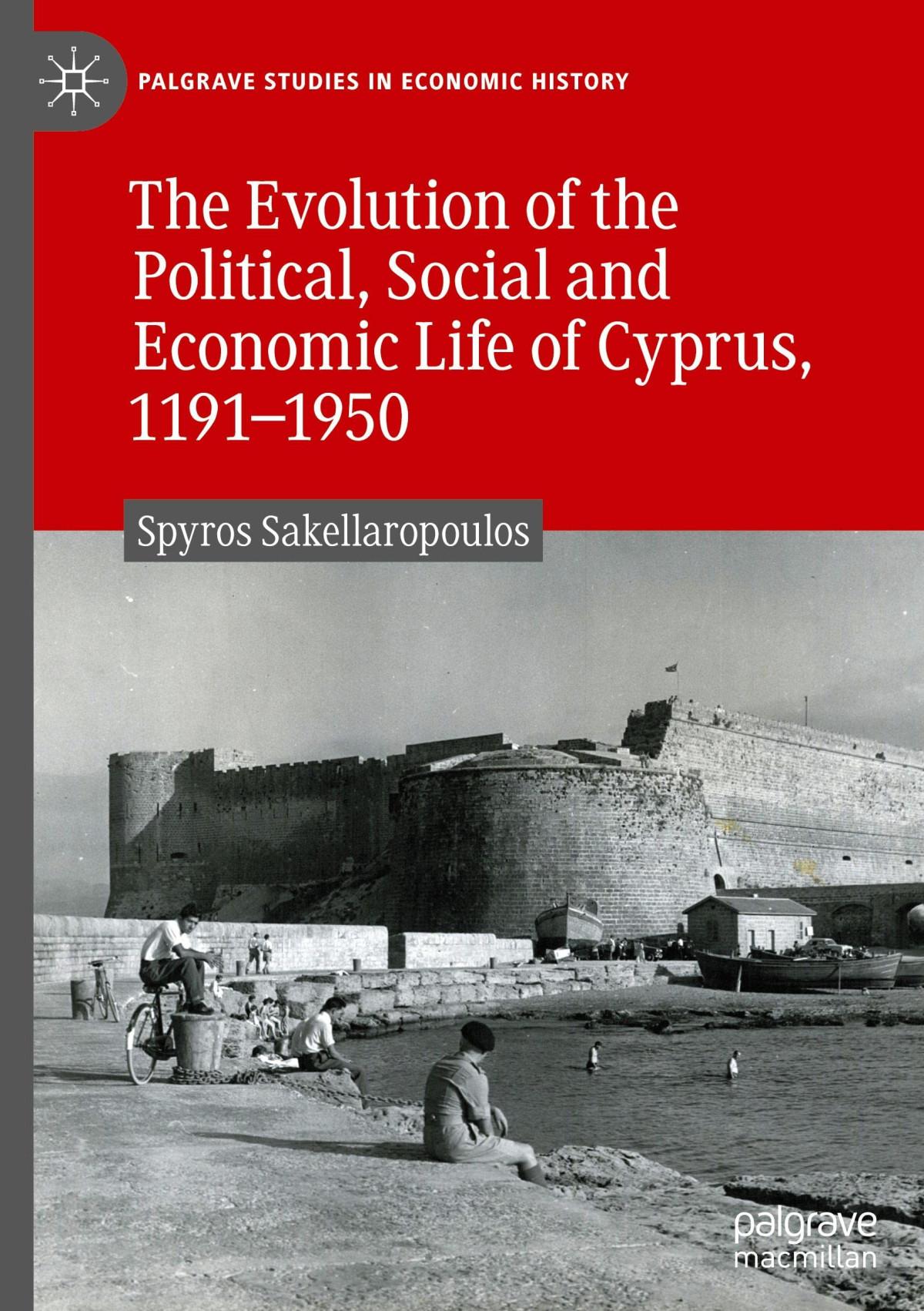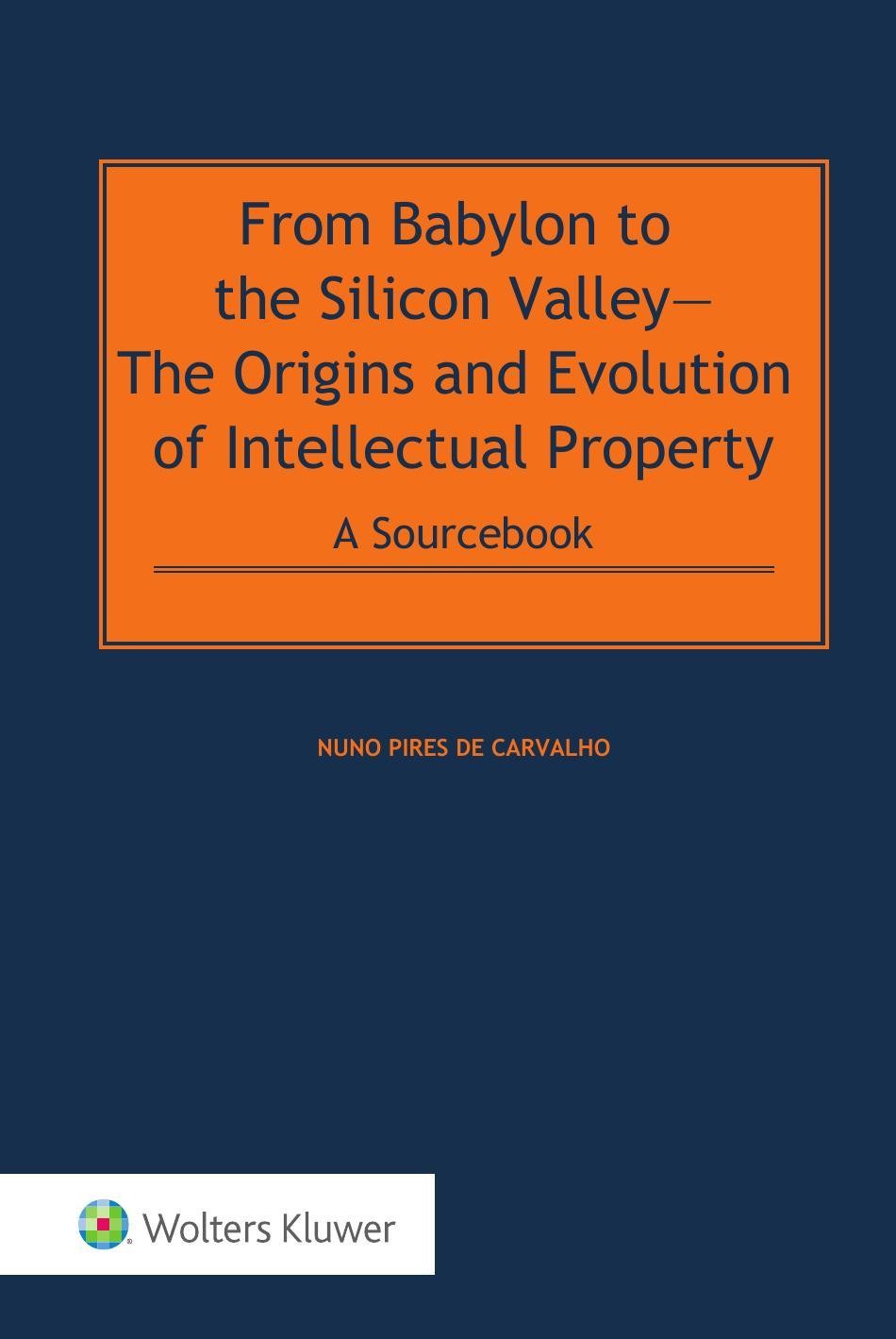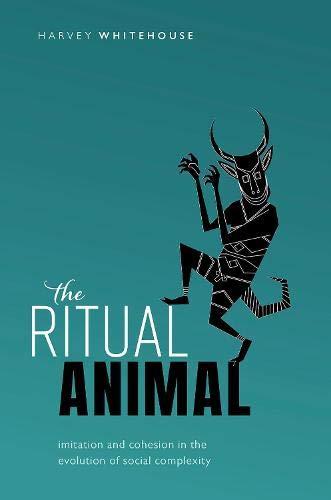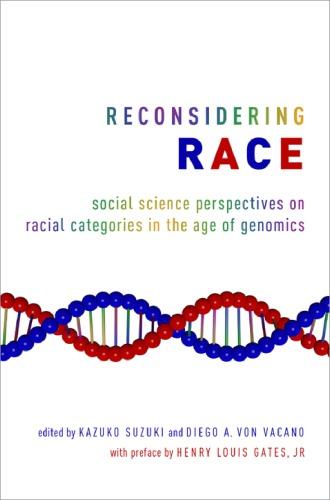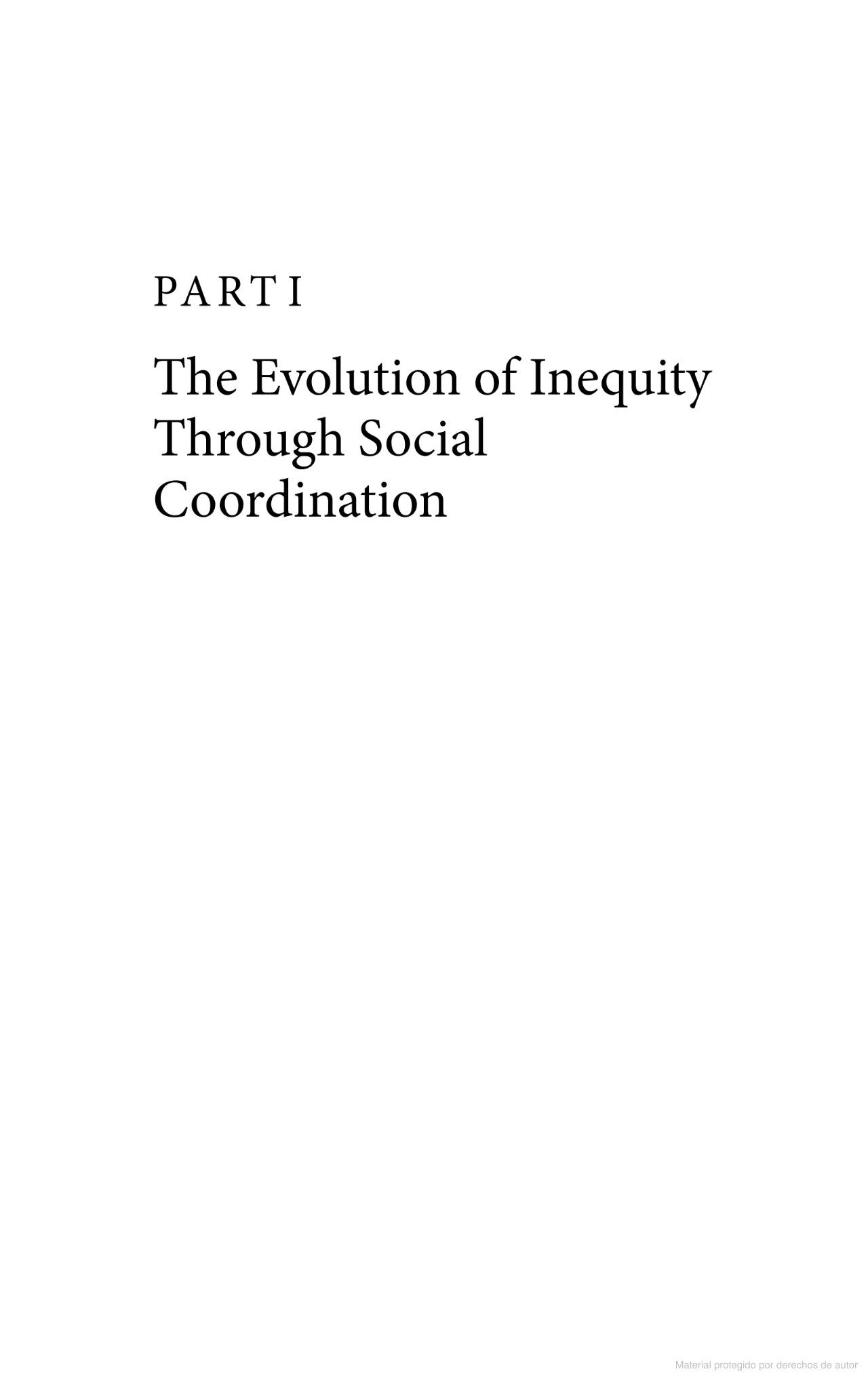The Origins of Unfairness: Social Categories and Cultural Evolution 1st Edition Cailin O'Connor Visit to download the full and correct content document: https://ebookmass.com/product/the-origins-of-unfairness-social-categories-and-cultur al-evolution-1st-edition-cailin-oconnor/
More products digital (pdf, epub, mobi) instant download maybe you interests ...
Methods for Human History: Studying Social, Cultural, and Biological Evolution 1st ed. Edition Patrick Manning
https://ebookmass.com/product/methods-for-human-history-studyingsocial-cultural-and-biological-evolution-1st-ed-edition-patrickmanning/
Categories we live by: the construction of sex, gender, race, and other social categories Asta
https://ebookmass.com/product/categories-we-live-by-theconstruction-of-sex-gender-race-and-other-social-categories-asta/
The Origins and Evolution of Consumer Capitalism; A Veblenian-Keynesian Perspective John P. Watkins
https://ebookmass.com/product/the-origins-and-evolution-ofconsumer-capitalism-a-veblenian-keynesian-perspective-john-pwatkins/
Thatcherism in the 21st Century: The Social and Cultural Legacy 1st ed. Edition Antony Mullen
https://ebookmass.com/product/thatcherism-in-the-21st-centurythe-social-and-cultural-legacy-1st-ed-edition-antony-mullen/
Governance and Multiculturalism: The White Elephant of Social Construction and Cultural Identities 1st ed. 2020 Edition Catherine Koerner
https://ebookmass.com/product/governance-and-multiculturalismthe-white-elephant-of-social-construction-and-culturalidentities-1st-ed-2020-edition-catherine-koerner/
The Evolution of the Political, Social and Economic Life of Cyprus, 1191-1950 Spyros Sakellaropoulos
https://ebookmass.com/product/the-evolution-of-the-politicalsocial-and-economic-life-of-cyprus-1191-1950-spyrossakellaropoulos/
From Babylon to the Silicon Valley : the origins and evolution of intellectual property : a sourcebook Nuno Pires De Carvalho
https://ebookmass.com/product/from-babylon-to-the-silicon-valleythe-origins-and-evolution-of-intellectual-property-a-sourcebooknuno-pires-de-carvalho/
The Ritual Animal: Imitation and Cohesion in the Evolution of Social Complexity Harvey Whitehouse
https://ebookmass.com/product/the-ritual-animal-imitation-andcohesion-in-the-evolution-of-social-complexity-harvey-whitehouse/
Reconsidering Race: Social Science Perspectives on Racial Categories in the Age of Genomics Kazuko Suzuki
https://ebookmass.com/product/reconsidering-race-social-scienceperspectives-on-racial-categories-in-the-age-of-genomics-kazukosuzuki/
TheOriginsofUnfairness TheOriginsof Unfairness SocialCategoriesandCultural Evolution CailinO’Connor
GreatClarendonStreet,Oxford, ox26dp, UnitedKingdom
OxfordUniversityPressisadepartmentoftheUniversityofOxford. ItfurtherstheUniversity’sobjectiveofexcellenceinresearch,scholarship, andeducationbypublishingworldwide.Oxfordisaregisteredtrademarkof OxfordUniversityPressintheUKandincertainothercountries
©CailinO’Connor 2019
Themoralrightsoftheauthorhavebeenasserted
FirstEditionpublishedin 2019
Impression: 1
Allrightsreserved.Nopartofthispublicationmaybereproduced,storedin aretrievalsystem,ortransmitted,inanyformorbyanymeans,withoutthe priorpermissioninwritingofOxfordUniversityPress,orasexpresslypermitted bylaw,bylicenceorundertermsagreedwiththeappropriatereprographics rightsorganization.Enquiriesconcerningreproductionoutsidethescopeofthe aboveshouldbesenttotheRightsDepartment,OxfordUniversityPress,atthe addressabove
Youmustnotcirculatethisworkinanyotherform andyoumustimposethissameconditiononanyacquirer
PublishedintheUnitedStatesofAmericabyOxfordUniversityPress 198 MadisonAvenue,NewYork,NY 10016,UnitedStatesofAmerica
BritishLibraryCataloguinginPublicationData
Dataavailable
LibraryofCongressControlNumber: 2018967875
ISBN 978–0–19–878997–0
Printedandboundby
CPIGroup(UK)Ltd,Croydon, cr04yy
LinkstothirdpartywebsitesareprovidedbyOxfordingoodfaithand forinformationonly.Oxforddisclaimsanyresponsibilityforthematerials containedinanythirdpartywebsitereferencedinthiswork.
ToJim Acknowledgments Somanypeoplehavecontributedtotheproductionofthisbook.Many thanks frsttomycolleaguesJefreyBarrett,Jean-PaulCarvalho,John Dufy,SimonHuttegger,LouisNarens,MikeMcBride,BrianSkyrms, KyleStanford,andJamesWeatherallforfeedbackatvariousstagesof thisproject.Thanksalsotothemanygraduatestudentresearcherswho workedontheprojectincludingCalvinCochran,EmmaCushman,Travis LaCroix,AydinMohseni,SaritaRosenstock,HannahRubin,andMike Schneider.AndthankstootherstudentsatUCIrvineforfeedbackalong theway,includingNikhilAddleman,GerardRothfus,GregorGreslehner, andBenConover.ThankstotheExperimentalSocialScienceLaboratory atUCIrvine,andthoseinvolvedinrunningit,forfacilitatingexperimentalworkontheculturalRedKingefect.
Severalvisitingfellowshipsprovedcrucialincreatingthespaceand timetowritethisbook.SpecialthankstothePittsburghCenterforthe PhilosophyofScience,andtoJohnNorton.Thankstomyfellowfellows andpostdocs,especiallyAgnesBolinska,forideasandfeedback.Thanks totheMCMPatLMUMunich,theLondonSchoolofEconomics,and AustraliaNationalUniversityforvisitingfellowshippositionsduringthe timeIwaswritingthisbook.Andthankssomuchtothemanypeopleat eachoftheseuniversitieswholistenedtotalksontheproject,andgave commentsandfeedback.
ManythankstobothEllenClarkeandKevinZollmanforextensive commentsonthemanuscript,andthankstoLiamK.BrightandRemco Heesenforcommentsalongtheway.Toalltheotherpeoplewhogave commentsandfeedbackattalksbutwhoIhaveforgottenabout–thank you!
Therewereseveralcollaboratorswhoseworkandinsightswereinvaluable.TheseincludeLiamK.Bright,JustinBruner,CalvinCochran,Travis LaCroix,AydinMohseni,HannahRubin,andMikeSchneider.Special thankstoJustinBruner,whosepaperontheculturalRedKingwasthe inspirationthateventuallyledtothisbook,andwhocollaboratedwithme
x acknowledgments
onsomanyofthepapersdescribedhere.AndthankstoNicoleBourbaki forongoingsupport.
ThismaterialisbasedonworksupportedbytheNationalScience FoundationunderSTSgrant 1535139 “SocialDynamicsandDiversityin EpistemicCommunities”.ManythankstoNSFfortheirsupport,andto FredKronzinparticular.
Somanythankstomyfamilyandfriendsforputtingupwithmeduring thepainfulprocessofwritinga frstbook.MaureenandJamesWeatherall, allmythanksfortheextensivechildcareandemotionalsupport!Jim Weatherall,youaremyrock.EveandVera,youareridiculous.
Listof fgures 1.1.Payof tableforasimple,correlativecoordinationgame
1.2.Payof tablesfortwosimple,correlativecoordination games.(a)showsonewhereoutcomeBvs.Bispreferred toAvs.Abybothactors.(b)showsonewhereactorshave diferentpreferencesoverthetwooutcomes
1.4.Payof tablesfortwosimple,complementarycoordination games.In(a)actorsbothpreferonecoordinationoutcome totheother.In(b)actorshaveconfictingpreferencesover thetwocoordinationoutcomes
1.6.Ageneralpayof tableforatwo–person,two-strategygame
2.1.Ageneralpayof
3.3.Aphasediagramforthedancinggameevolvedwiththe
3.4.Aphasediagramfortheleader–followergameevolved withthetwo-populationreplicatordynamics
3.5.Correlativecoordinationgamewithapreferableoutcome
3.6.Astaghunt
4.1.Payof tableforanMFEOgamewhere α and β determine thebeneftstothetwoactorsforreachingthepreferable
4.2.Proportionsofsimulationsthatgotothejointlyless preferableequilibriumforaperfectlydividedpopulation playingtheMFEOgamewhere α = β 90
4.3.Phasediagramsforperfectlydividedpopulationsplaying MFEOgameswhere α = β varies.As α = β increases,the sizeofthebasinofattractionforthebetterequilibrium alsoincreases 91
4.4.Anasymmetricleader–followergame 93
5.1.Payof tablesfortwosimplifedNashdemandgames 107
5.2.Basinsofattractionforfairandunfairoutcomesbetween typesintheNashdemandgamewiththreestrategies 112
5.3.Basinsofattractionforfairandunfairoutcomesbetween typesintheNashdemandgamewithvariousnumbersof strategies 114
5.4.Payof tableforathree-strategyNashdemandgamewith threatpoints 119
5.5.Basinsofattractionforamodelwhereonetypehasa higherdisagreementpointintheNashdemandgame 120
5.6.Payof tableforaNashdemandgamewhereoneplayer carriersoutathreatinresponsetoaHighdemand 121
5.7.Nashdemandgamewithdiferentoutsideoptionsforeach player 127
5.8.Proportionsofoutcomeswhereaninitiallypowerful groupmaintainspowerforaNashdemandgamewhere disagreementpointsaredeterminedbypastsuccess 130
6.1.AgeneralgamewherewecanpotentiallyobserveaRed King/Queenefect 136
6.2.ANashdemandgamewithdemands 4 and 6136
6.3.Phasediagramfortwopopulationsplayingthe two-strategyNashdemandgame 137
6.4.PhasediagramsfortwopopulationsplayingaNash demandgamewhereonepopulationevolves m timesas quicklyastheother.WeseeaRedKingefect 137
6.5.PhasediagramsfortwopopulationsplayingaNash demandgamewhereonepopulationevolves m timesas quicklyastheother.As m increases,theRedKinggrows stronger,butisbounded 139
6 6.PhasediagramsfortwopopulationsplayingaNash demandgamewhereonepopulationevolves m timesas quicklyastheother.WeseeaRedQueenefect 140
6.7.BasinsofattractionfortwotypesplayingtheNash demandgamewithaminoritygroup 142
6 8.BasinsofattractionfortwotypesplayingtheNash demandgamewithaminoritygroup 144
6.9.BasinsofattractionfortwotypesplayingtheNash demandgamewithaminoritygroup 145
6.10.PhasediagramsfortwopopulationsplayingaNash demandgame.Withrestrictedstartingpoints,ageneral RedQueencantranslatetoaRedKing 147
6.11.PhasediagramsfortwopopulationsplayingaNash demandgame.Ifactorstendtodisplayin-group preference,theculturalRedKingisstrengthened 148
6.12.BasinsofattractionfortwotypesplayingtheNash demandgamewithaminoritygroup 151
6.13.BasinsofattractionfortwotypesplayingtheNash demandgamewithaminoritygroup 151
6.14.Payof tableforaNashdemandgamewithbackground payofsforoneactor 156
6.15.Apopulationwithtwodimensionsofdemographic category,genderandrace 158
6.16.Basinsofattractionforactorswithfourintersectional typesplayingaNashdemandgame 160
6.17.Basinsofattractionforactorswithfourintersectional typesplayingaNashdemandgame 161
7.1.Basinsofattractionforcollaborationfortwotypesplaying aNashdemandgamewithanoutsideoption 166
7.2.Anetworkwithtwotypesrepresentedbyblackandwhite nodes.Edgesrepresentinteractivelinksbetweenagents 167
7.3.AnanalogoftheculturalRedKingefectinanetwork modelofagentsplayingtheNashdemandgame.Results areaveragedoverparametervalueswithH = 6170
7.4.Anevolvingnetworkwhereeventuallyagentsbreakall out-grouplinks,leadingtototalhomophily 172
7.5.Increasingdiscriminationcorrespondstoincreasing homophilyinnetworkbargainingmodels 173
8.1.Athree-strategycomplementarycoordinationgame 183
8.2.Athree-strategycomplementarycoordinationgamewith betterequilibriaforbothplayers 184
8.3.Athree-strategycomplementarycoordinationgame whereplayershavesomeconfictofinterest 184
8.4.Basinsofattractionforthethreeequilibriainthe householdcoordinationgameasafunctionof α , β = .6186
8 5.Basinsofattractionforthethreeequilibriainthe householdcoordinationgameasafunctionof β , α = .1186
9.1.Phasediagramsfortwopopulations.Inthe frst,thetop rightequilibriumishardertoescape 202
9.2.ANashdemandgamewhereactorscometofeelbadly whenmakingHighdemandsofanotherplayer 204
9 3.ANashdemandgamewhereactorscometofeelbadly whenmakingHighdemandsofanotherplayer,butnot enoughtodisruptthepurestrategyequilibria 204
Introduction Imagineyouareinagroupoftenpeople.Inaminute,youwillallbe randomlypairedwithapartner.Atthecountofthree,withoutachance totalkorcommunicateinanyway,youmustdancethetango.Ifyouboth stepforward,you’llcollide.Ifyoubothstepback,you’lllookstupid.Ifone ofyoustepsforward,andtheotherback,you’lldothedancesuccessfully. Thisisanexampleofacoordinationproblem—asituationwhereactors havesimilarinterestsbutnonethelessfacedifcultiesincoordinating theiraction.Presumablyneitheryounoryourpartnerreallycareswhich oneofyoustepsforwardandwhichback,atleastnotasmuchasyoucare aboutexecutingcomplementaryactions.Inotherwords,whatyoureally careaboutiscoordination.
Nowimagineaslightlydiferentscenario.Youareinagroupof fvemen and fvewomenwhowilleachbepairedwithapartneroftheopposite gender.Andagain,atthecountofthree,youdancethetango.Thisis anotherexampleofacoordinationproblem,relatedtothe frst,butwith anextraelement,whichisthatthegroupisdividedintotwoobservably diferenttypes.
Onethingthatisimmediatelyobviousaboutthesecoordinationproblemsisthatoneiseasiertosolvethantheother.Inthesecondcase, justasmallamountofinformation(somethinglikeonepersonshouting “womenstepback”!)wouldbeenoughtogettheentiregroupcoordinatingefectively.Ifagroupcanbeeasilydividedintotypes,andcanagree aheadoftimethatcertaintypestakecertainactions,thiseliminatesthe needforextensiveplanninglater.
Likewise,onecouldimagineascenariowhereinsteadofagroupof menandwomenonewasinagroupwithpeopleoftwodiferentraces, orobservablydiferentreligions,orredheadsandbrunettes,ortalland shortpeople,elderlyandyoungpeople,gothsandbandgeeks.Inanyof
The Origins of Unfairness: Social Categories and Cultural Evolution. Cailin O'Connor, Oxford University Press (2019). © Oxford University Press. DOI: 10.1093/oso/9780198789970.003.0001
thesecasesthecoordinationproblemiseasiertosolvebecausethereare visibletraitsthattheactorscantakeadvantageofwhencoordinatingtheir action.
Nowimagineaslightlydiferentscenario.Youareinaroomwithten reallyhungrypeopleand fvepizzas.Everyoneisgoingtosplitapizza witharandompartner.Therearemanywaystodividethepizza—you couldgetonesliceandyourpartner fve,oryoucouldeacheatthree slices,oryoucouldevendecidethatonepartnerwillgetallthepizza— andinordertohaveapeaceful,happyluncheachpairisgoingtohaveto chooseadivision.Thissortofsituationisusuallyreferredtoasabargainingproblem,butnoticethatittoodemandsasortofsocialcoordination. Noonewantstoleavepizzabehind,ortoargueoverthepizza.
Onewaytoavoidsquabblesistodecideaheadoftimeonsomedivision thateveryonewillfollow.Probablytheonethatsoundsmostnaturalto youisthe 50–50 split.Thissoundsattractive,ofcourse,becauseit’sfair. Everyonegetsthesameamountofpizza.Butthereissomethingelse attractiveaboutthissplit.Supposethegroupinsteadagreesthateveryone shoulddividetheirpizza 80–20.Oncerandompairinghappens,there thenmustbefurtherdeliberationoverwhogets 20% andwho 80%.This isbecausethe 80–20 split,unlikethe 50–50 one,isasymmetric.Infact, 50–50 istheonlysymmetricdivisionofpizzaavailabletothegroup (assumingtheywanttoeatthewholepizza),andthustheonlyonethat completelysolvesthelunchproblemaheadoftime.
Nowonceagainimaginethesameset-upbutwith fvewomenand fve men,eachpairofwhomwillgoonadate.Inthiscase,thegroupcansolve theirproblembyagreeingonthe 50–50 split,buttheycanalsosolvetheir problembyagreeingthateachwomangets 80% andeachman 20% of thepizzaoncepairingsaremade.Theadditionofgenderheremeansthat onesingledecisionisenoughtocoordinateonaninequitabledivisionin awaythatwasn’tpossibleforauniformgroup.
Humanscontinuallyfacerealcoordinationproblems.Consider,for example,divisionoflabor.Dividinglaborinanorganizedwayiscrucial tothesuccessofhumangroups.Householdswhereeveryonecleans andnoonecooksareunsuccessful,asaresocietieswhereeveryoneis asoldierandnooneisafarmer.Justlikethesillydancingproblem
describedabove,intheserealproblemsmembersofagrouphavetotake complementarysocialrolestobesuccessful.
Dividingresourcesisalsoaubiquitouspartofhumaninteraction.In theworkforce,coworkersmustdecidewhowillobtainthebenefts,in termsofsalary,bonuses,timeof,etc.,oftheirjointactionandwhowilldo theworktoproducethesegoods.Inthehousehold,partnersmustdecide whodoeshowmuchofthework(dividingtheresourceoffreetime)and whoreceiveswhicheconomicgoodsproduced.
Thecentralaimofthisbookwillbetoexplorethewaysinwhich socialcategories—especiallygender,butalsocategorieslikeraceand religion—interactwithandcontributetosocialsolutionstoproblemsof coordinationandresourcedivision.Inparticular,thisbookusesformal frameworks—gametheoryandevolutionarygametheory—toexplore theevolutionofnormsandconventionsthatpiggybackonseemingly irrelevantfactorslikegenderandracetosolvetheseproblems.Aswe willsee,theseframeworkselucidateavarietyoftopicsfromtheinnatenessofgenderdiferences,tocollaborationinacademia,tohousehold bargaining,tominoritydisadvantage,tohomophily.Inparticular,these frameworkshelpshowhowinequitycanemergefromsimpleprocessesof culturalchange.Ingroupswithgenderandracialcategories,theprocess oflearningconventionsofcoordinationandresourcedivisionissuch thatinawidearrayofsituationssomegroupswilltendtogetmoreand othersless.ClarkandBlake(1994)wrotethat:“... explanationofthe originsofinstitutionalizedsocialinequalityandpoliticalprivilegemust resolvethecentralparadoxofpoliticallife—whypeoplecooperatewith theirownsubordinationandexploitationinnon-coercivecircumstances” (17).Theanswertothisparadoxontheframeworkherewillbethat evenifeveryonelearnstodowhatisbestforthemselvesateverystageof culturalevolution,thegroupwillstilltendtoendupinsituationswhere peopleofonesorttakeadvantageofpeopleofanothersort.Nooneis behavingirrationallyinthisstory,andateverypointeveryoneismaking themostoftheirsocialenvironment.Oncewelookthroughacultural evolutionarylens,thereisnoparadox—inequityistheexpectedoutcome ofbasicculturalevolutionaryprocesses.
AccordingtoSmithandChoi(2007),“Inthehistoryofsocialthought, accountsoftheriseofinequalitytendtosortintotwocategories:those thatemphasizethebeneftsthathierarchybringstoall ... andthosethat
emphasizeexploitationorcoercionbyonesegmentofsociety”(118). Thisbookisdividedintotwoparts.PartIcanbelooselyunderstood asmodelingthe frstsortofinequity,andPartIIthesecond.Another waytothinkaboutthisisasfollows:PartIshowswhysocialcategories canplayausefulsocialfunction,despiteleadingtosomeinequity.PartII showswhysocialcategoriesfacilitateprocessesthatleadtoinequitywith nobenefcialfunction.
Inthe frsthalfofthebookIfocusontherolesocialcategoriescanplay assymmetrybreakersincertaintypesofcoordinationproblems.Istart byintroducingcoordinationgames—simplemodelsthatcanrepresent andinformrealcoordinationproblems.Iusethesegamestoshowhow groupsthatusecategorieslikegendertocoordinatebehaviorcanbe moreefcientandmoresuccessful,inmanycases,thanthosethatdo not.Theresult,however,isadiferentiationofrolesthat,whilemutually benefcial,areofeninegalitarian.AsIargue,thesuccessofthesesocial patternsmeansthatweshouldexpectgroups,viasociallearningor culturalevolution,toadoptsocialcategoriesforjustthispurpose.Inthe caseofgender,groupstakeadvantageofexistingbiologicalsexdiferences tocreategenderrolesandconventions.
Inthesecondhalfofthebook,Ishif focustoanalyzetheemergenceofmoreperniciousinequitybetweensocialgroups.Iintroduce bargaininggames,intendedtorepresentsituationsofresourcedivision. Oncecategorieshavebeenadopted,theculturaldynamicsthatleadto bargainingnormsareradicallychanged.Newnormsthatareinequitable, butnotespeciallyefcient,arise.Andoncetheydo,theycanbeselfperpetuating.Inotherwords,thedevelopmentoftypessetsthestagefor seriousinequitytospontaneouslyemergeandtopersistbetweensocial groups.Ianalyze,inparticular,theconditionsunderwhichonesocial groupwilltendtogainanadvantageintermsofbargainingandresource division.
Onethemethatrunsthroughbothhalvesofthebookisthatsurprisinglyminimalconditionsareneededtorobustlyproducephenomena relatedtoinequitythatweusuallythinkofaspsychologicallycomplex. Ittakesverylittletogenerateasituationinwhichsocialcategories (suchasgender)arealmostguaranteedtoemerge.Thepreconditions underwhichmodelsmovetowardoutcomesthatlooklikediscrimination,inequity,anddistributionalinjusticeare,again,veryminimal.Once
inequityemergesinthesemodels,ittakesverylittleforittopersist indefnitely.
Ofcourse,intherealworld,genderandinequityarepsychologically complex—in-grouppreference,stereotyping,andbiasesareclearlypart ofthestory.Demonstratingthatyoudon’tneedthesefactorstogenerate inequity,though,isimportantforanumberofreasons.Themodelswe willconsidershowusthatevenifweeliminatepsychologicalbiases,this willnotsolvetheproblemofinequity.Theyindicatethatweneedtothink ofinequityaspartofanever-evolvingprocess.Itisnotsomethingwecan expectto fxandbedonewith.
Alongtheselines,attheendofthebook,Iuseconceptsfromevolutionarygametheorytoaddresssocialchange.AsIargue,acultural evolutionaryframeworkcanprovidesometimessurprisinginsightsinto shifinginequitablenormsofresourcedivision.Evenwhenmoraleducationseemstohavelittleefectonexistinginequitablenorms,itcan nonethelesschangetheunderlyingstrategicsituationinwaysthaterode thestabilityofthesenorms,allowingforchangelater.Alternatively, existingfairnormscanbeerodedinwaysthatmakethemunstable,even thoughobservablebehaviorhasnotchanged.Ingeneral,asjustdescribed, theultimatepictureIpresentisonewherethoseconcernedwithsocial justicemustremainvigilantagainstthedynamicforcesthatpushtoward inequity.
Thisbookalsodemonstrateshowusefulinprincipletoolsfromgame theoryandevolutionarygametheorycanbeinelucidatingcausesofand potentialsolutionstoinequity.And,inparticular,itdevelopsageneral frameworkthatcanbeusedtofurtherexplorequestionsrelatedtosocial categorieslikegender,race,caste,andclass,andtheinequitiesthatemerge betweenthesecategories.Ihopethetoolsdevelopedhereprovefruitful toothersinphilosophyandthesocialscienceswhoareinterestedinthe emergenceofinequity.
0.1 Overview Thebodyofthebook,asmentioned,isdividedintotwoparts. PartI,whichincludesChapters 1 through 4,focusesoncoordination, and,inparticular,thecaseofgendereddivisionoflabor.PartII,including Chapters 5 through 7,shifsgearstofocusoninequitabledivisionsof
resourcesbetweensocialgroupsmoregenerally.InChapters 8 and 9,I drawtogetherinsightsfrombothhalvesofthebook.
InChapter 1,Istartbyintroducingacasethatwillbeusedtoillustratetherolesocialcategoriescanplayincoordination—thatofgendereddivisionoflabor.Ithenbegintobuildtheevolutionarymodeling frameworkusedthroughoutthebookbyintroducingcoordinationproblemsandcoordinationgames.AsIpointout,onceonebuildsmodelsof coordinationproblemsitiseasytoseethatdiferentonesprovidediferent sortsofchallengestogroups.Someproblemscanbesolvedwhenanentire grouparrivesataconventionforasingle,universalbehavior.Thiswill notworkforproblemswhereactorsmustengageindiferentbehaviors tosucceed.ThisdistinctionsetsthestagefortherestofPartI,whereI showhowsocialcategoriescanfacilitatecoordinationinthelatterkinds ofproblem.
InChapter 2,Iintroducethenotionoftype-conditioning,ordiferentialtreatmentofinteractivepartnersbasedonirrelevantsocialtypes (ofenreferredtoas“tags”intheliterature).Whatdoesthissortof behaviorentailintherealworld?Howdoesitfunctioninamodel?As Iwillshow,oncetype-conditioningispossibleincoordinationgames,it allowsforpopulationstoreachoutcomesthatcanprovideabeneftin termsofgroupefciency,andofenintermsofindividualpayof,butthat maybeinegalitarianincharacter.Inthecaseofgendereddivisionoflabor, groupsusegendertodividerolesefciently,butinawaythatsometimes advantagesoneside.Chapter 3 extendsthisdiscussionbyshowinghow thepresenceoftypesandtype-conditioninginamodelradicallyalters culturalevolutionaryprocesses.Inparticular,Idemonstratethatgroups engagingincoordinationproblemswithtypesreachthebenefcial,but inegalitarian,outcomesjustdescribed.
Chapter 4feshesouttheupshotoftheseevolutionarymodelstothe caseofgender.First,Ishowhowwecanunderstandconventionalityas comingindegrees,andhowthisshouldinformourunderstandingofthe innatenessofgenderroles.Thesecondmainargumentfromthischapter isthatfromacompletelyundiferentiatedsociety,thebehaviorsassociatedwithgender,andperhapswhatwewouldevenwanttocallgender itself,canemergeendogenouslyaspartofasolutiontocoordination problems.
PartIIbeginswithChapter 5 whereIpresentananalysisoftherole ofpowerintheemergenceofbargainingconventions.AsIshow,small
powerasymmetries,likethosethatemergeinPartIofthebook,cantranslatetoadvantagesforapowerfulgroup.Furthermore,theseadvantages canpersistinconditionswherewinningonebargainingcontestimpacts thepowerofasocialgroupandimprovestheirchancesofwinningfuture bargainingcontests.Inotherwords,theycancompound.InChapter 6, Ifocusonasymmetriesinlearningenvironments(ratherthanpower) andtheroletheyplayintheemergenceofinequity.Ishowhowminority statusinparticularcanleadtodisadvantageasaresultofthediferent learningenvironmentsthatminorityandmajoritymemberstendto inhabit.Inaddition,attheendofthischapter,Iconsidertheroleofpower andlearningasymmetriesinintersectionalpopulations.Throughout,I highlighthowlittleisneededtogenerateinequityofapernicioussort betweensocialgroups.
Chapter 7 extendsthisanalysistoask:whathappensonceinequitable bargainingconventionsariseinasocialgroup?Inparticular,doesdiscriminationleadtheoppressedtoavoidtheiroppressors?Toaddressthis question,Ilookatnetworkmodels,whichexplicitlyrepresentinteractive structuresbetweenindividuals.Aswillbecomeclear,discriminationcan leadtosegregation.Thosewhosuferdiscriminationfromout-group memberstendtochoosein-groupmemberstointeractwithinstead. Though,asIwillillustrate,whenonegrouphasadvantageswithrespect toresourcesandpower,adisadvantagedgroupwillsometimestolerate discriminationtogainaccesstothoseresources.
Chapter 8 modelsingreaterdepthaparticularcaseofinterestto economistsandsociologists—theemergenceofhouseholddivisionof laborandhouseholdbargaining.Themodelsaddresshowinequitycan emergeinthehousehold,andalsowhycertainpatternsofcoordination arelikelytoarise.Indoingthis,Idrawonbothpartsofthebook,and showhowthediferentsortsofinequityaddressedinPartIandPartII caninterrelate.Thisexplorationleadsintothe fnalchapterwhereI focusonchanginginequitablesocialpatternsofbargaining.Inparticular, Iusetheculturalevolutionaryframeworkdevelopedinthebookto groundadiscussionoftheconditionsthatfacilitateorhindernorm change.AsIpointout,socialdynamicalpatternsmaymeanthatwe arethinkingaboutsuchchangeinthewrongway.Insteadofconceptualizinginequityasasocialilltosolve,amorefruitfulapproachwill treatinequityasacontinuingprocess,requiringcontinuingefortto counteractit.
0.2 ExplanationandModelsofCultural Evolution BeforecontinuingtoPartIofthebook,I’dliketosayawordaboutthe methodologyused.
Thisbookattemptstounderstanddeepmathematicalregularitiesin someofthesocialdynamicalpatternsthatarisearoundgenderand inequity.Forthemostpart,thisworkishighlyabstractandhighly idealized.Inalmosteverycase,Iprovidethemodelsdiscussedwith interpretations—matchingupelementsofthemodelstoelementsofrealworldsituationsand,whereappropriate,arguingthatthismatchisa goodone.Ialsouseempiricalwork,whenpossible,toassesswhether themodelsdiscussedare,infact,providinginsightintothephenomena underdiscussion.Becausethebookaddressesmanyrelatedphenomena thesediscussionsnecessarilyvaryinlevelsofcarefulness.Someofthe modelspresentedaretiedtotherelevantphenomenaquitetightly.Others aresuggestiveofthephenomena,butthedetailsarenot flledinas meticulously.Thismeansthattheexplanatoryroleofthemodelswill diferfromcasetocase.
Insomecases,themodelsdiscussedcanbethoughtofasproviding “how-possibly”information.Ifsomethingcanevolveinanevolutionary modelunderbasicconditions,wecometobelievethattheseconditions areenoughtopossiblysupporttheevolutionofthatbehaviorinthe realworld.Inothercases,Itakethemodelstohavedeeperexplanatory power,givingusinsightintohowsomepatternsofbehaviormayhave potentially emerged.Thediferencehereisnotinthemodels,butin theepistemicroletheyplay.Inthe“how-potentially”cases,themodels areintendedtoincreaseourconfdenceinthepotentialofaprocess tohavereallyoccurred.1 Inparticular,manyoftheexamplesofhowpotentiallymodelinginthebookwillinvolvewhatWeisberg(2007, 2012) describesasminimalistidealization,wherethemodelparesawaycausally irrelevantfactorstorevealcandidatesfortheunderlyingcausalvariables responsibleforaphenomenon.2 Instillothercases,Iwillarguethat
1 Thesemodelscanbeespeciallyimportantindirectingustowardfutureempirical research(Rosenstocketal., 2017).
2 Alongtheselines,Potochnik(2007)presentsapictureofwhyevolutionarymodelsthat appealtopayofswhileabstractingawayfromthedetailsofthemechanisticinteractionsthat
themodelsdiscussedplayanimportantepistemicrolebyoutliningthe minimalconditionsforcertainsocialpatterns—especiallyinequitable ones—toarise,regardlessofhowthesepatternswereactuallygenerated intherealworld(O’Connor, 2017b).Thiskindof“how-minimally” modelingisespeciallyusefulinthinkingaboutintervention.Forinstance, supposeweinterveneonrealgroupsviaimplicitbiastraining.Ifinequity emergesunderminimalconditionsthatdonotincludebiases,weshould notexpectthisinterventiontofullysolveourproblem.
Importantly,sometimesthesamemodelwillplaymultipleepistemic roles.Forexample,Iprovidemodelsoftheemergenceofgenderroles thatIthinkpotentiallyilluminatehowthesepatternsemergedinthereal world.Atthesametime,theydemonstratehowsuchrolescanpossibly emergefromminimalpreconditions.Altogether,theexplanatorypicture thatemergesechoesDownes(2011),whoemphasizesthewidesetof explanatoryrolesthatmodelscanplay.3
Whenitcomestoculturalevolution,therearemanymodelingchoices toemploy.Sometimesthedebatesabouttheefcacyofthesemodeling frameworks(ortheefcacyofmodelingculturalevolutionatall)get quitehot.4 Partoftheproblemisthatculturalevolutionisitselfavaried andsometimesdisunifedphenomenon.Thereisnoreasontothinkthat humans,withourbigbrainsandourcornucopiaofculturalpractices, shouldundergoculturalchangeofthesamesortineverycase.Infact, thereisroomformanydiferentmodelingpracticestosuccessfullyrepresentculturalevolution,withtheappropriatenessofthepracticevarying fromcasetocase.(Thissaid,forinterestedreadersMesoudietal.(2006) givesaninfuentialunifyingaccountofculturalevolution,andHenrich (2015)givesanextensiveoverviewofthevariedprocessesofcultural evolutionandgene-cultureco-evolution.)
Ofcourse,anyonemodelerwillhavetochooseaframeworkto elucidatethephenomenatheyhopetorepresent.Thesortsofbehaviors actuallydriveevolutionarestilluseful.Thesemodelscapturewhatwemightdescribeascore causesofevolutionaryprogress.
3 Seealso,forexample,Nersessian(1999);O’ConnorandWeatherall(2016).
4 Culturalattractiontheoristsaccusethoseusingpopulationbiology-typemodelsof tryingto ftthesquarepegofculturalevolutionintotheroundholeofbiologicalevolution. Inresponse,culturalattractiontheoryisaccusedofcircularreasoning.Evolutionarygame theoristsarecriticizedforover-simplifcation,whileaccusingothersofbuildingmodelsthat lackcausaltransparency.
thisbookfocusesonincludethingslikegendereddivisionoflabor,racial bias,andnormemergenceintheworkforce.Thesebehaviorsaretheresult ofmanyprocesses.Theyareshapedby(atleast)rational(andnotso rational)decision-making,individuallearningasaresultofpastevents, sociallearningfromsuccessfulorprominentsocialmodels,parent-toofspringculturaltransmission,andpeer-to-peertransmission.Inother words,therealprocessesshapingthesebehaviorsaremassivelycomplex, andessentiallyunmodelableintheirfulldetail.Ratherthantryingto pulltheseprocessesapart,Iwillfocusonasimplechangeprocessthat capturessomeofwhathappens—especiallyadaptivechanges—inmany oftheseindividualprocesses.Itwillnotbeaperfectrepresentation,but itcanprovideunderstandingwhiledoingwellenough.Thismethod refectsachoicetoelevatecausaltransparency,simplicity,andtractable explanationovercomplexityandaccuracy.Philosophersofmodeling havearguedthatmodelsmustalwaystradeof desiderata,andthiswork isnodiferent(Weisberg, 2012).
Onemightask:whyusemodelsatall?Whynotsticktoempirical datainexploringtheseissues?Stewart(2010),inapapermodelingthe emergenceofracialinequity,compellinglyjustifestheuseofmodelsin thissortofcase.Gendernormsandnormsofinequityemergeinthe contextofdynamical,humaninteraction.Empiricalresultsgatheredat asingletimewillfailtocapturetheseinteractions.Evenifwewantedto gatherdynamicaldataontheemergenceofbroadsocialconventionsand norms,thisdataisofenremovedfromusintime.Also,itofeninvolves countlessinteractionsacrossmany,manysocialactors.Inshort,itisnot practicaltogainafullunderstandingofthedynamicsoftheemergence ofconventionsandnormsinhumansocietyviaempiricalmeans.Models can fllthegap.Thereissomethingmoretosay,applyingspecifcallyto caseswheresocialinterventionsarecalledfor(asinthetopicsstudied here).Socialinterventionsarecostlyintermsoftimeandefort.Theyalso poseariskwhentheyimpactthelivesofthoseinvolved.Modelspresent awaytostudycounterfactualdependenciesinthesocialrealmwith minimalrisk,andrelativelylittlecost.Theycanthenbeusedtodirect furtherempiricalstudythatiswellgroundedintheoreticalprediction.5
5 ThankstoLiamK.Brightforpullingoutthisroleforthemodelsinthisbook.
1 Gender,Coordination Problems,andCoordination Games WomenintheAshantetribeofWestAfricamakepotterytobeuseddayto dayforcookingandstoringfood.Men,ontheotherhand,areresponsible forwoodworking.IntheHadzatribe,mentendtohuntmeat,while womenfocusontheacquisitionofvegetables.IntheUnitedStatesduring the 1960s,womenwereprimarilyresponsibleforpreparingbreakfast, whilemendidthelawncare.
Thesepatternsarepartofwhatisreferredtoinhumansasthegendered divisionoflabor.Acrossallobservedsocieties,itisthecasethatmenand womenhave,atleasttosomedegree,dividedlaborbetweenthem.This createsanexplanandumforsocialscientists—whydoweseesuchpatterns?Itisn’tasifhumangroupshadtoarrangethemselvesinsuchaway. Laborcouldhavebeendividedbyindividualpreferencesorstrengths.Or laborcouldbeundivided,sothateachindividualdoesabitofwhatever jobneedsdoing.Thishasledtoquestionslike:domenandwomenhave diferentinnatepreferencesthatcausethemtonaturallychoosediferent jobs?Isthereaculturalfunctionfulflledbythisdivisionoflabor?
PartIofthisbookwillillustrate(amongotherthings)howsocialcategories,likegender,canbreaksymmetryincertainsortsofcoordination situations,andsoallowgroupswithcategoriestocoordinatebetterthan groupswithoutthem.Becauseofthisfunctionality,asIwillargue,cultural evolutionhastakenadvantageofsocialcategories,shapingmanyofour conventionsaroundthem.Inordertotellthisstory,I’mgoingtomake useofgendereddivisionoflaborasakeycase.Thisis,inpart,because
The Origins of Unfairness: Social Categories and Cultural Evolution. Cailin O'Connor, Oxford University Press (2019). © Oxford University Press. DOI: 10.1093/oso/9780198789970.003.0002
itissowellstudiedinthesocialsciences,andinpartbecauseitisa paradigmexampleofhowirrelevantdiferencesbetweenindividualscan nonethelessbecomecompletelycentraltosocialcoordination.Crucially, previousauthorshavearguedthatgendereddivisionoflaboristhe startingpointforgenderinequality(Okin, 1989;Ridgeway, 2011),and theculturalevolutionaryframeworkIdevelopwillhelpinformhow naturalprocessesoflearningandculturaltransmissionmightleadgroups toinequitablenormsandconventionsofthissort.Aswewillseein Chapter 4,aculturalevolutionaryframeworkcanalsoshedlightonsome puzzlingfeaturesofthegendereddivisionoflabor.
Allthisisnottosaythatgendereddivisionoflaboristheonly interestingcasewheretheframeworkdevelopedheremightapply.Both casteandclassaresocialcategoriesthatseemtobepartofsolutionsto coordinationproblems.Sincethesecasesareverydiferentintheirdetails, though,itwillbebeyondthescopeofthisbooktocarefullyillustratehow andwherethisframeworkappliesmorebroadly.InPartIIofthebook, wewillconsidermodelsthatapplystraightforwardlytoabroaderset ofcases.
IntheIntroduction,Idescribedtwosimplecoordinationscenarios— onewherepeoplewanttocoordinatetheirdancesteps,andanotherwhere theyneedtodecideonadivisionofpizza.Coordinationinthebroadest senseofthewordiscentraltothisbook.Inparticular,coordinationproblemsdefnethesetofstrategic,socialscenarioswheresocialcategories endupmatteringdeeplytotheevolutionofconventionsandnorms.I’ll startthechapterwithabriefdiscussionofgenderandgendereddivision oflabor,drawingoutthefeaturesmostrelevanttotheframeworkdevelopedhere.ThenI’lldiscussgenerallywhatcoordinationproblemsareand introducethemodelsusedtorepresentthem—coordinationgames.I’ll drawonpreviousworkineconomicstoexplainwhydivisionoflabor is,itself,acoordinationprobleminthestandardsense.(Alongtheway, we’lldiscussthenotionsofconventionandnorm,andtheuseofgame theoreticmodelstorepresentthem.)Aswe’llsee,notallcoordination gamesareequal.Whilesomecanbesolvedbyconventionsandnorms thatareidenticalforeveryoneinasociety,others,thosethatrequire peopletotakediferent,complementaryactions,poseaspecialproblem. Coordinatingbehaviorinthesesortsofgamesrequiresextrainformation tobreaksymmetrybetweenthosewhoareinteracting—whoistheone
whostepsforward,andwhoback?Divisionoflabor,asitturnsout,is justsuchaproblem.Actorshavetodecidewhowilldowhichofseveral complementaryactions.Thiswillsetthestageforthenexttwochapters, whichwillexplorehowsocialcategorieslikegendercanprovideameans ofsymmetrybreakinginthesesortsofcases.
1.1 GenderandGenderedDivisionofLabor 1.1.1
Whatisgender? Theanswertothisquestionisnotstraightforward.Genderisnotasimple concept,norisitaunifedone.Acrossacademicdisciplinesdiferent defnitionsofgenderareemployedfordiferentreasons.1 Sincethisbook isnotaworkofgendertheory,butaworkofevolutionarygametheory thataddressessocialcategories,wewillwanttounderstandtheaspects ofgenderthathavethemosttodowithstrategicsocialbehavior.In particular,Iwillfocusmorehereontherolegenderplaysinsuchstrategic behavior,ratherthan,say,howgendershapespersonalexperience.
SociologistsCandaceWestandDonZimmerman,intheirseminal paper,“DoingGender,”pointoutthat“[i]nWesternsocieties,the acceptedculturalperspectiveongenderviewswomenandmenas naturallyandunequivocallydefnedcategoriesofbeing Competent adultmembersofthesesocietiesseediferencesbetweenthetwoasfundamentalandenduring”(WestandZimmerman, 1987, 128).Theclaim isthatwetendtothinkofmenandwomenasinherentlydiferent,andas belongingtoclear,distinctcategories.Thesecategoriesseemsonatural thatuntilrelativelyrecently,therewaslittlepushtoexaminethem.Money (Moneyetal., 1955)wasthe frstacademictousetheterm“genderrole”to refertosomethingthatassociateswithbiologicalsex,butisnotidentical toit.Theoristshavesubsequentlyendorsedthedistinctionbetween biologicalsexandgender,where,roughly,theformertracksinbornbiologicaldiferences,andthelatterconstructedsocialcategories.(Things arenotactuallysosimplebecause,forexample,culturaldiferences
1 Inphilosophy,Haslanger(2000)providesadiscussionofdiferenttypesofdefnitions ofgender,andintroduceswhatshecallsapragmaticdefnition—onethatisusefulfor positivesocialchange.
shapethedevelopmentofbodies(Butler, 2011a),butsuchconsiderationsarebeyondthescopeofthisexploration.2 SeealsoHaslanger (2015b)forananalysisofthewayscultureinfuencesourconcept of“sex”.)
Ausefulnotionofgenderforourpurposesgoessomethinglikethis. Basedoninnatebiologicalsexdiferences,wecandetermine sexcategories,orcategoriesthatneatlydividethehumanpopulationintotypes basedonsex(WestandZimmerman, 1987;RidgewayandSmith-Lovin, 1999).Thesecategoriespiggybackonbiologicalsexdiferences,butare separatefromthembecause,forexample,intersexpeopletendtobe assignedtoonecategoryortheotherandtranspeoplemayswitchsex categories(MoneyandEhrhardt, 1972).3 Usingthesesexcategories, societiesdeveloppatternsofsocialbehaviorthatconstitutegender.These patternsaregovernedbynormativeexpectationsforaperson’sbehavior acrossmanybehavioralarenas.
Sowhatarethesenormativelygovernedpatternsofbehavior?There areseveralbroadclassesofpatternedbehaviorrelatedtogenderthatI willfocusonhereasespeciallyusefulforunderstandingtheevolutionary modelsthatwillbedeveloped,thoughthesewillnotcaptureallgendered patternsofbehavior.First,cross-culturally,gender,asarule,isusedto dividelabor,butthisdivisionisofenconventional.Inthenextsection, thiswillbeelaborated.Second,sexcategoryandgenderidentityisusually signaled,ofenelaborately,throughbothappearanceandbehavior.In Chapter 2,Iwillfurtherdiscussthissortofsignalinginserviceofa moregeneraldiscussionofsocialcategoriesandtheirinstantiationin models.Third,genderedbehaviorsarereproducedinhumanpopulations vialearningandpunishment.InChapter 3,wewillcomebacktothe relevanceofthistoevolutionarymodelsofgender.
2 Butler(2011a)arguesthatsexshouldbeunderstood“nolongerasabodilygiven onwhichtheconstructionofgenderisartifciallyimposed,butasaculturalnormwhich governsthematerializationofbodies”(xi).
3 Additionally,insomesocieties,therearemorethantwosexcategories.Forexample, somesocietieshaveathirdcategoryconsistingofbiologicalmaleswhoaresociallylike women,suchashijrasinIndiaandsomeNativeAmericantwo-spiritpeople.OtherAfrican andNativeAmericansocietieshavethirdcategoriesforbiologicalfemaleswhobehavelike menbytakingthesocialresponsibilitiesoffathersandhusbands(MartinandVoorhies, 1975;Blackwood, 1984;Williams, 1992;Thomasetal., 1997).
1.1.2 Gendereddivisionoflabor Asmentioned,everyculturedivideslaborbygender.4 Thisistrueeven thoughhumansocietieshavetakenonradicallydiferentmodesof organizationcross-culturallyandoverthecourseofhistoryranging, forexample,fromtraditionalforagingsocieties,toagriculturalsocieties, toindustrial,andtopostindustrial,societies(Basow, 1992).Withineach ofthesecategoriesarecountlessstructuraldiferencesrelatedtopolitical organization,socialstructures,marriagerules,etc.
Therearetwosortsofwaysinwhichlaborisdivided,the frstrelating towhodoeswhichtasksandthesecondtotheoverallamountofwork done(BloodandWolfe, 1960).Underthetitle“divisionoflabor,”Iwillbe concernedwithdivisionofcomplementaryjobs.Thedivisionofoverall amountoflaborwillfallunder“divisionofresources”and“household bargaining”inparticular,andwillbediscussedatlengthlaterinthebook, especiallyinChapter 8
Althougheverysocietydivideslaborbygender,thisdivisiontakes onverydiferentforms(MurdockandProvost, 1973;Dahlberg, 1981; Costin, 2001;Marlowe, 2010).MurdockandProvost(1973),inaclassic articlelookat ffy“technological”activitiesin 185 societiesincluding thingslikefoodcollection,production,andpreparation,materialabstraction/processing,andmanufacturingofarticles.Theycodedthesebased onwhethertheactivitieswereperformedexclusivelybymen,predominantlybymen,bybothsexesequally,predominantlybywomen,or exclusivelybywomen.Theyfoundthatsomeactivities,likehuntinglarge game,metalandwoodworking,mining,and(puzzlingly)makingmusical instruments,wereperformedalmostexclusivelybymenacrosscultures.5 Otheractivities—suchasspinning,laundering,cooking(especiallyvegetablefood),anddairying—tendedtobeperformedbywomen.Alarger rangeofactivities,tovaryingdegrees,wereperformedbyonegender insomesocietiesandtheotherinothers.Theseincludedactivitieslike makingrope,plantingcrops,carryingburdens,caringforsmallanimals, house-building,etc.Someactivitieswereperformedbybothgendersin
4 EvidencediscussedinGibbons(2011)alsosuggeststhatthisdivisionoflaborbygender inhumansisancient.
5 Evenactivitieslikebiggamehunting,though,aresometimesperformedbywomen cross-culturally(BirdandCodding, 2015).


